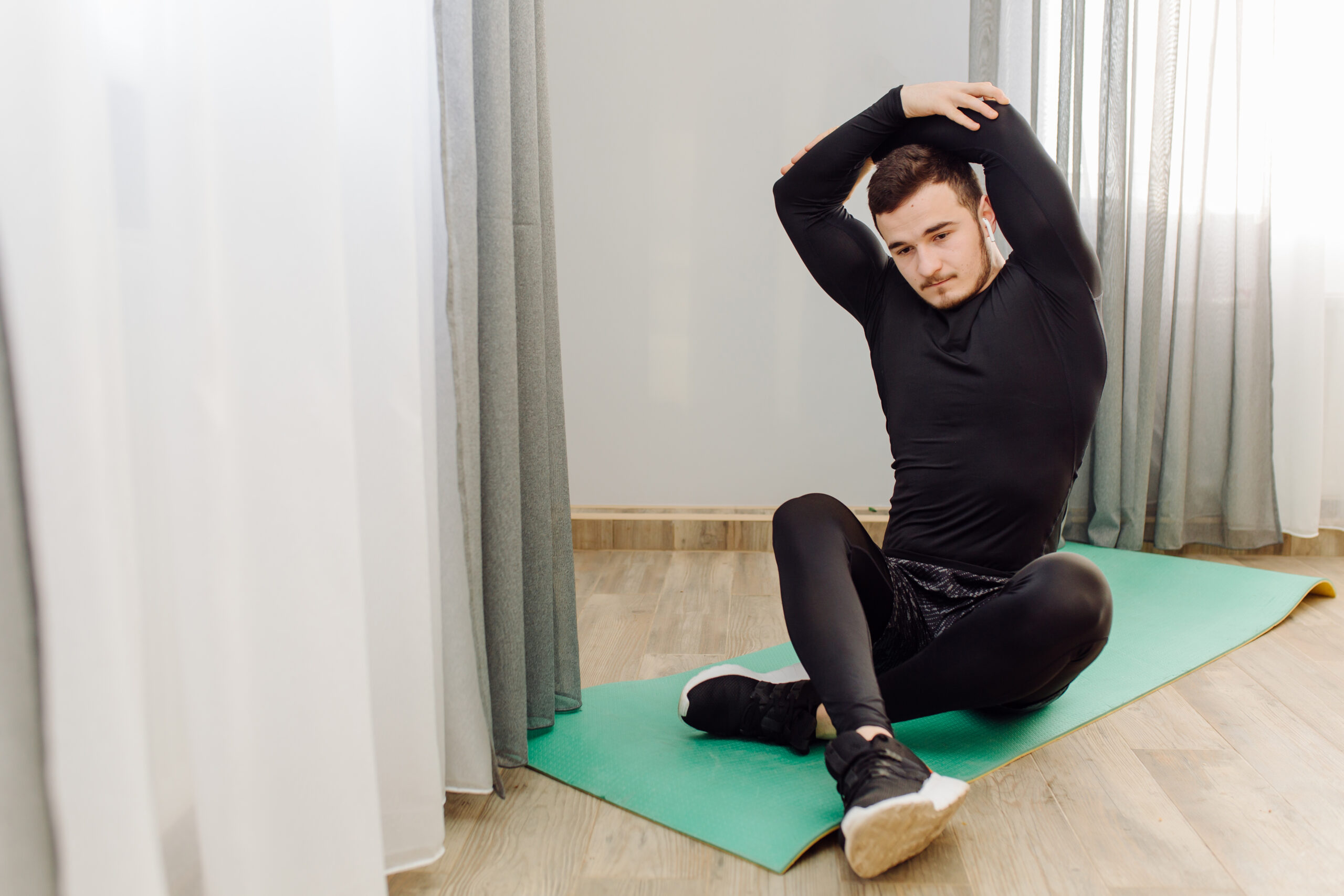When we hear the word ‘exercise’, practically all of us have a clear image of having a muscular build-up, increased stamina, or the ability to lose weight. Nevertheless, it might interest you to know that exercise and mental health are related. People need to realize that exercise is not only healthy for the body but also very helpful, especially for our brain. An increase in energy, positive feelings, and a decrease in the manifestation of such conditions as stress, anxiety, and depression – all these changes happen as a result of regular physical activity.
In this blog post, a little overview of the connection between exercise/physical activity and mental health will be discussed as well as how adding physical activity to your daily routine can improve mental health. Whether you have an anxiety disorder or are experiencing stress or any other issue in your life, this will help you know how exercise can greatly help you.

Table of Contents
What is the Connection Between Exercise and Mental Health?
It means how we are in our heads and dealing with ourselves. It determines how one acts, perceives stress and organizes interpersonal relationships as well as solutions. As with the body, it is the same with the soul, it also needs to be tended to. This is the place where exercise meets mental health.
When exercising, the human body experiences certain chemical reactions that are beneficial to the brain. Exercise and mental health are related to the use of neurotransmitters – the chemicals that can help to transmit signals within the brain. Endorphine, serotonin, and dopamine for instance are produced during exercise to help facilitate a good mood and reduce anxiety.
Another benefit of exercise is stress control: cortisol levels (the stress hormone) are reduced during physical training and the brain is strengthened. Furthermore, the physical activity that needs to be performed will help you develop psychological hardiness, better sleep, as well as improved cognitive abilities – all of these factors crucial to mental health.
How Exercise Affects the Brain: The Science Behind Exercise and Mental Health
Exercise does not only strengthen muscles but also the brain gets to work to control the muscles during exercising. Exercise for mental health is the connection between physical movements and the body’s responses to those movements and the mind. Here are some key ways in which exercise positively affects brain function:
1. Endorphin Release: The Body’s Natural Mood Booster
Another benefit that exercise and mental health have is the production of the natural mood booster known as endorphins. Endorphins are chemicals that are naturally released into the body by the brain to help to destruct pains and stress. These chemicals work with receptors within the brain to enhance one’s emotions and come up with a feeling of well-being. Also known as the ‘’happy hormones”, endorphins have been known to leave a feeling of happiness, relaxation, and reduced anxiety.
The pleasant feeling people experience after exercising is commonly called the “runner’s high,” and these endorphins are released during the course of exercising. Whether you are just walking or rushing through a regime, the exercise pulls the old feel-good factor and you are mentally slightly less tense.
2. Serotonin and Dopamine: The Brain’s Happy Chemicals
Not only does endorphin level increase with exercises, but serotonin and dopamine levels are also raised. These two neurotransmitters are involved in the control of moods, motivation, and overall mental health. Serotonin moderates the client’s mood, appetite, sleep, and dopamine which is related to the reward system of the brain which gives the feeling of satisfaction.
They also play a role in increasing mood and self-control and give a feeling of high from exercise. It also means turning to exercise and enhancing mental well-being is not just a short-term way of increasing levels of joy as well as decreasing the effects of mental disorders such as depression and anxiety.
3. Stress Reduction: Cortisol and Exercise
Cortisol is the primary stress hormone in the body. When you’re under stress, cortisol levels rise, which can lead to feelings of anxiety and tension. One of the major benefits of exercise and mental health is its ability to lower cortisol levels, helping you manage and reduce stress.
Exercise, especially aerobic activity like running, swimming, or cycling, is particularly effective at lowering cortisol levels and reducing stress. As a result, people who engage in regular exercise experience fewer symptoms of stress and are better equipped to handle stressful situations in their daily lives.
The Mental Health Benefits of Exercise
Exercise has an extensive list of mental health benefits. From improving mood to reducing anxiety, physical activity plays an essential role in mental wellness. Let’s dive deeper into the specific mental health benefits of exercise:
1. Reduced Symptoms of Depression
Depression affects millions of people worldwide, often leaving them feeling hopeless, helpless, and mentally drained. While therapy and medication are common treatments for depression, research shows that exercise and mental health are strongly linked, with regular physical activity being a highly effective intervention.
Self-coined Studies have shown that exercise is as good as medications for alleviating the symptoms of mild to moderate depression. The skin feels challenged by exercise, so it pumps out more endorphins and other brain chemicals that enhance your mood. Further, exercise contributes to self-esteem and makes you feel that you are ‘back on the wheel’ so to speak.
2. Reduced Anxiety and Panic Attacks
Anxiety disorders are among the leading mental health challenges globally, and thousands of individuals are sufferers. Those who suffer anxiety find themselves feeling more fearful, nervous, and panicky than usual. Physical activity particularly has been found to have a beneficial effect on possible anxiety and general stress levels, this being in line with the body’s capacity to overcome stress.
Now this is what happens: When you get into the act of exercising, your body’s physical stress response system gets smaller and smaller. This is mainly because exercise reduces cortisol levels and improves sleep leading to a natural relaxing feeling. Aerobic exercises such as running, swimming, and cycling have even been recommended more than others for anxiety reduction and relaxation.
3. Better Sleep and Mental Health
Sleep and mental health are closely connected. Poor sleep can negatively affect your mood, leading to irritability, low energy, and heightened stress. Conversely, regular exercise has been shown to improve sleep quality and help you fall asleep faster.
Exercise helps regulate the body’s internal clock, promotes relaxation, and increases the production of sleep-inducing hormones like melatonin. As a result, people who engage in regular physical activity tend to experience better sleep, which directly contributes to improved mental health.
4. Enhanced Cognitive Function and Mental Clarity
Physically active individuals have more efficient brain functions not only helping uplift the mood of a person. They found that walking makes the brain receive more blood hence sufficient supply of oxygen boosts performance. Physical activity enhances the function of the brain, thus helping in memory, concentration, and mental focusing.
Aerobic exercise, in particular, has been linked to the growth of new brain cells in areas of the brain involved in memory and learning. This makes exercise and mental health a great combination for people looking to sharpen their thinking and improve focus.
The Best Types of Exercise for Mental Health
Not all exercises are created equal when it comes to improving mental health. While any form of physical activity is beneficial, some types of exercise are particularly effective at boosting mood, reducing anxiety, and improving cognitive function. Here are some of the best types of exercise for mental health:
1. Aerobic Exercise: Cardio for the Brain
Aerobic exercise, such as running, cycling, swimming, and dancing, is one of the most effective types of exercise for mental health. Aerobic activity boosts endorphin levels, reduces cortisol, and increases serotonin and dopamine production, making it an excellent choice for improving mood and reducing stress.
Research shows that for the provisions of mental health, you need to do at least 30 minutes of cardiovascular activity most of the week. Whether it entails walking around or running, cycling, or a cycling class, cardio exercises are an excellent way to have a healthy mind and body.
2. Strength Training: Building Confidence and Self-Esteem
Strength training, such as weightlifting or bodyweight exercises, has been shown to improve mental health in many ways. While strength training may not provide the immediate mood boost that aerobic exercise does, it can help reduce symptoms of depression and anxiety over time.
Strength training also helps improve body image and self-esteem, which can be especially beneficial for people struggling with low self-worth. As you build strength and improve your physical fitness, you may notice an increase in confidence and a more positive outlook on life.
3. Yoga and Mindfulness: Calming the Mind
Yoga and other mindfulness exercises, like tai chi and Pilates, combine physical movement with breathwork and meditation. These exercises have been proven to reduce stress, improve mental clarity, and enhance emotional regulation.
Yoga, in particular, has been shown to help manage symptoms of anxiety, depression, and PTSD. The mindful breathing techniques used in yoga help activate the parasympathetic nervous system, which is responsible for relaxation and stress reduction.
How to Start Incorporating Exercise into Your Daily Routine
If you’re new to exercise or want to improve your mental health through physical activity, getting started can be daunting. Here are some tips to help you incorporate exercise and mental health into your daily life:
1. Start Slow and Set Realistic Goals
If you’re just starting, don’t try to do too much too soon. Begin with small, achievable goals like walking for 15-20 minutes a day. Gradually increase the duration and intensity as you get more comfortable.
2. Find Activities You Enjoy
The best way to stick to an exercise routine is to choose activities that you enjoy. Whether it’s swimming, cycling, dancing, or yoga, find something that feels
